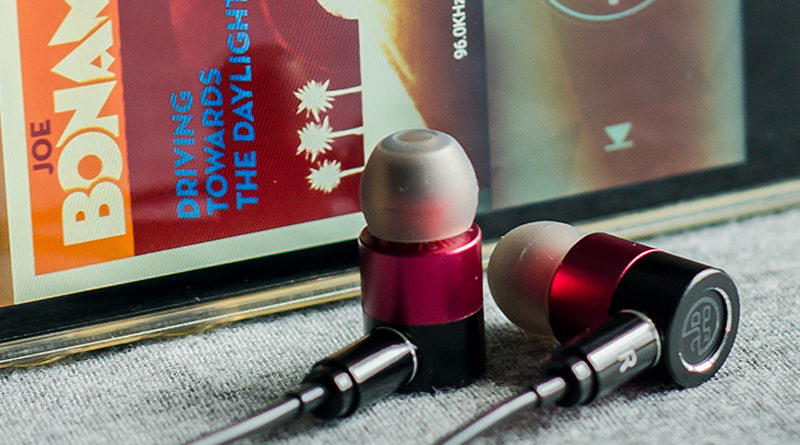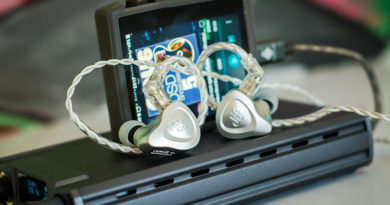Ourart Wine — dark and emotional sound
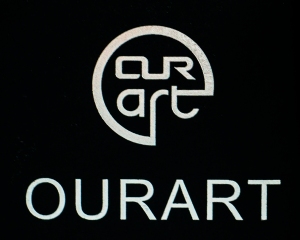

Starting a series of reviews for Ourart brand with their most expensive IEMs — Wine. Heard a lot of positive feedback about other Ourart models of earphones, such as Ti7 and ACG, and the picture in my mind now is that this brand is one of the leaders in this segment. That makes it even more interesting to evaluate Ourart Wine IEMs and to see how good are those in comparison to various similar products from other brands in the same price brackets. Earphones are harder for me to review since I don’t have this much of experience and the sound is usually less revealing because of less tight fit but there would still be a review for ACG from me as well. Wine, which is more familiar by shape and sturcture, is the product to start with.
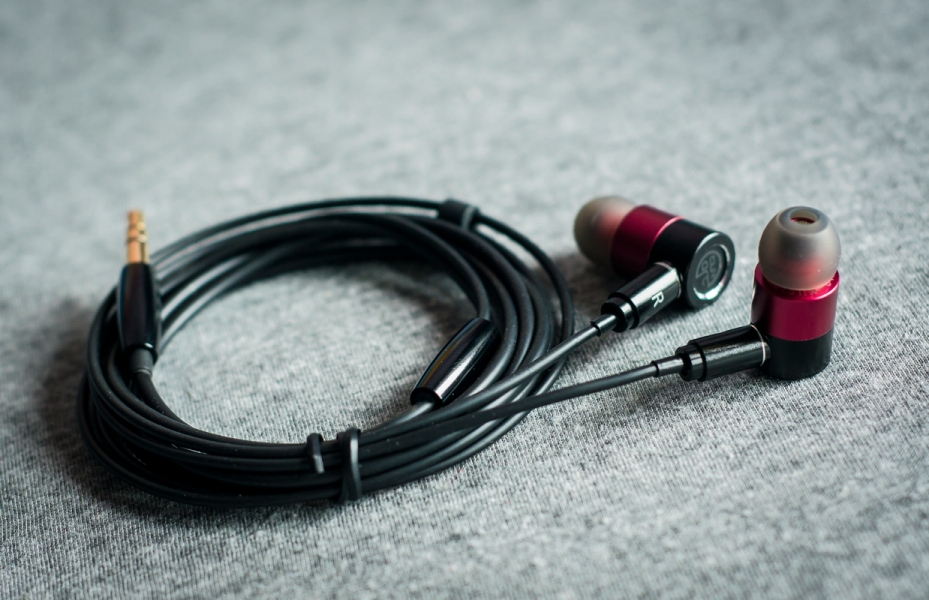
Ourart Wine IEMs are available at PenonAudio store
Ourart Wine technical specifications:
- Drivers: dynamic beryllium & titanium composite driver
- Frequency response: 10 — 35000HZ
- Sound pressure: 120dB
- Impedance: 32Ω
- Total Harmonic Distortion: <0.5% Mean (Not 1KHZ) 126mV
- Balance Degree: <±1dB
- Cable Length: 115cm
- Audio Jack: 3.5mm
- Cable connection: MMCX (pin shell diameter is less than 6.05mm)
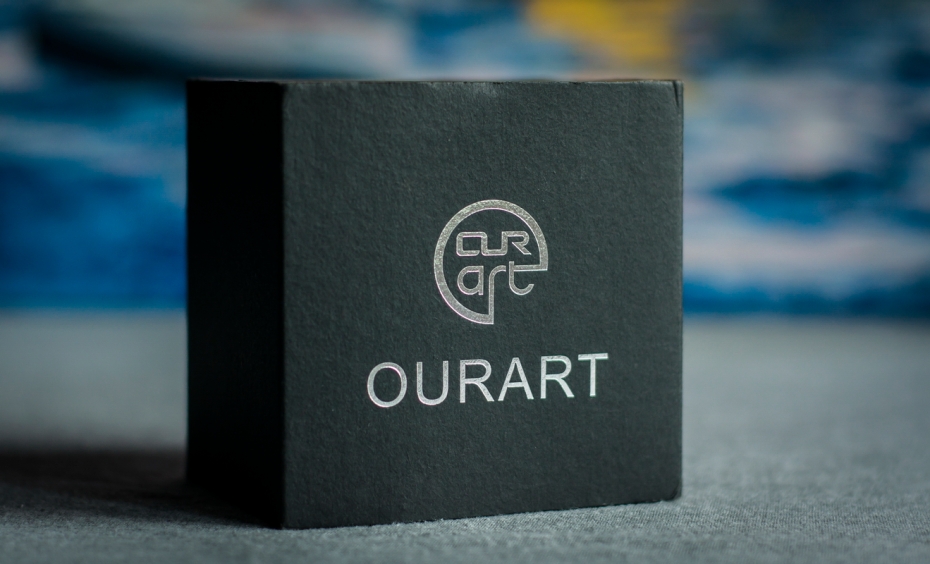
Packaging and design:
Ourart are masters of creating positive vibrations upon receiving their products. Traditionally, Wine comes in strict matt black square box and outer slipcover, both with the shiny metallic brand logo and name imprints.
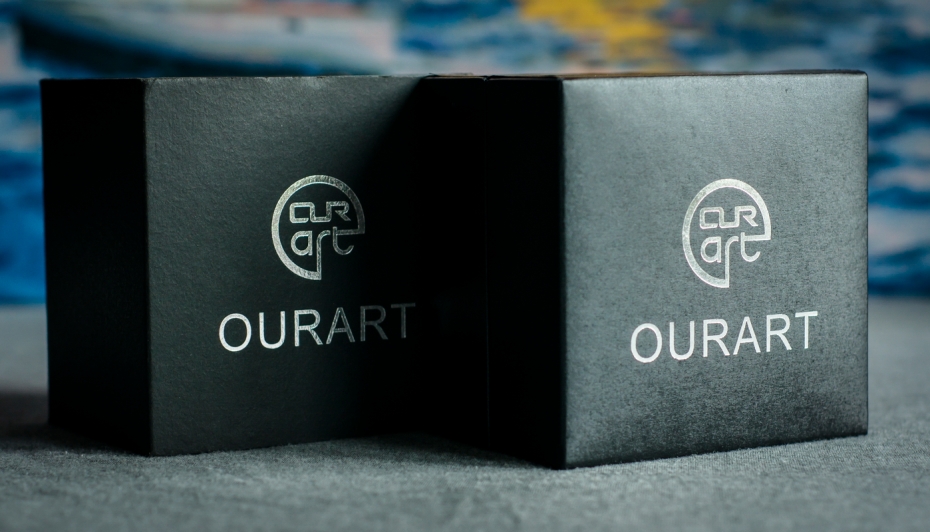
Top box cover is foldable. Inner box compartment reveals neat packing: IEMs rest on a special soft podium with all the additional accessories underneath.
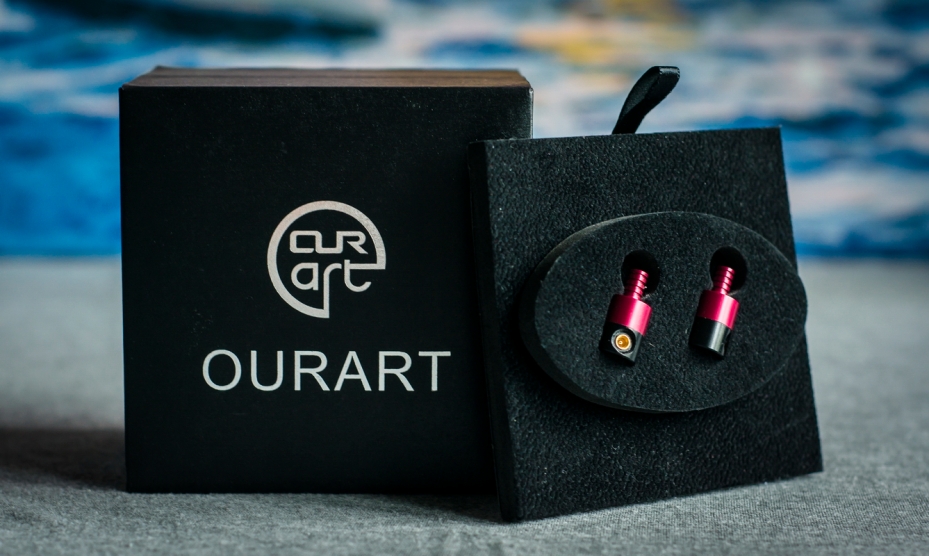
There was one more foamy insert in the top cover from inside to secure IEMs from falling out of its openings. Box walls are quite thick and the whole structure feels stiff and reliable.
Box contents:
- Ourart Wine IEMs
- audio cable
- 2 pairs of two-flange eartips
- 1 pair of memory foam eartips
- 3 pairs of silicone eartips
- plastic cable clip
- a pair of removable silicone earguides
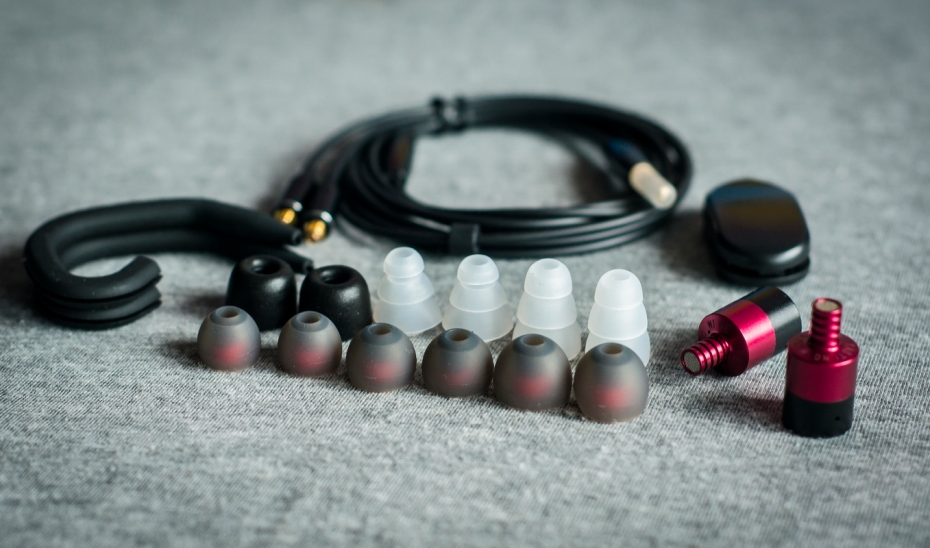
Unfortunately, no storage case was inside… But the choice of different types of eartips and presence of the additional earguides make Wine box contents stand out a bit from the crowd.

IEM shells are made of two parts of CNC-aluminum. Parts are almost equal in size, painted in black and crimson red. Top part (with the output nozzles) contains slogan imprint «Wine tasting music» and one compensational opening close to the output nozzle.
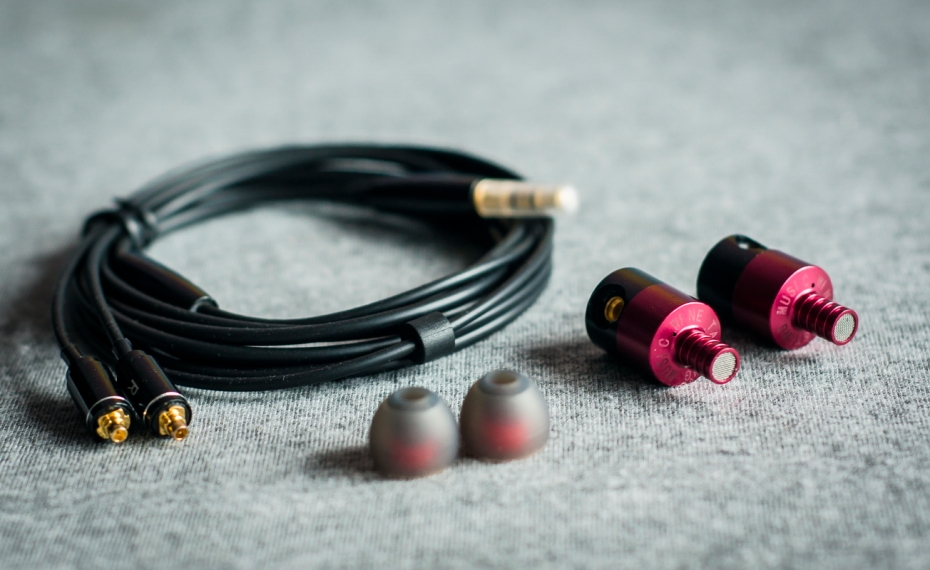
Nozzles form one piece with the body, reach quite far in length and covered with the aluminum grills. Several sockets on nozzle body help to retain eartips securely.
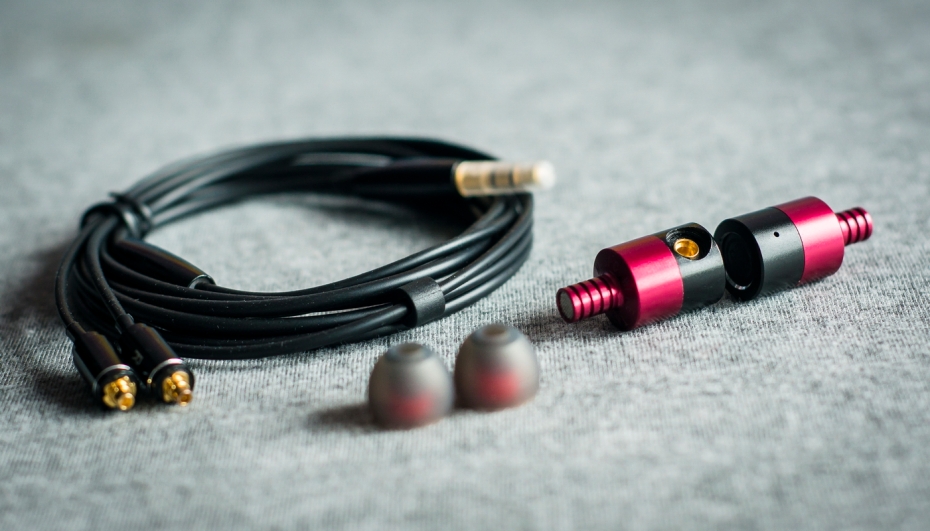
Base (black) parts have a couple of design elements: shiny beveled edges of the bottom cavity and brand logo imprint at the center there. One more compensational opening is located on the side of the base together with the MMCX ports.
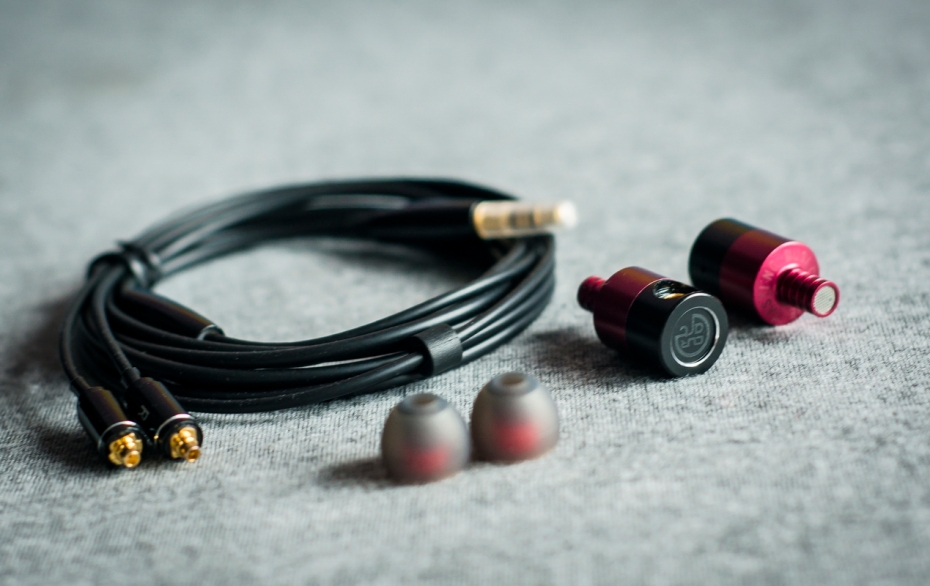
Not sure what Ourart means by declaring smalled MMCX diameter but I was able to connect other MMCX cables like Penon Audio Custom with 2.5mm and 4.4mm balanced audio jacks. Both went in, fit the shell openings and clicked to place.
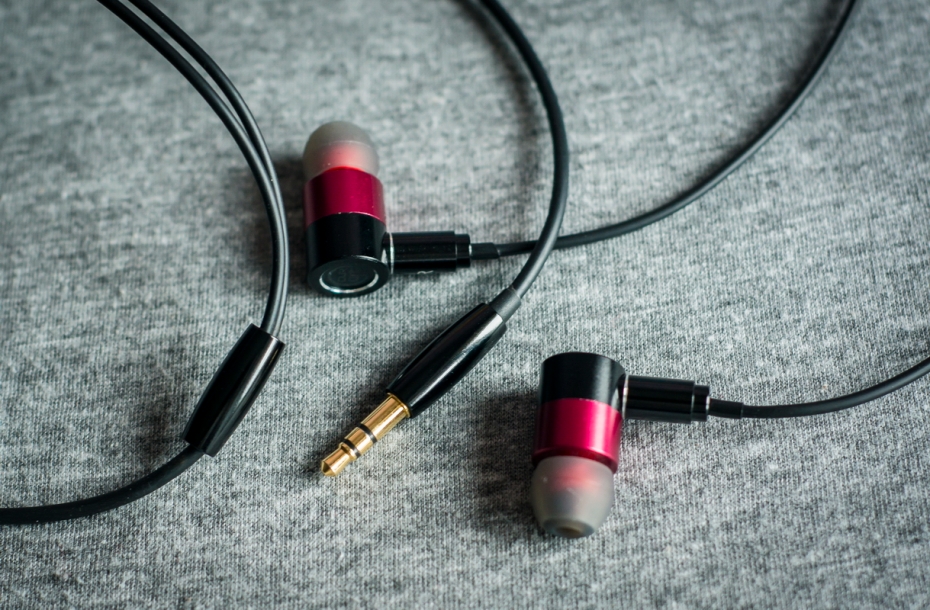
Stock audio cable consists of aluminum jack, Y-splitter and MMCX connector housings, have channel indication and 3.5mm SE gold-plated jack. The only concern goes to straight thin wire in silicone braid that tends to mess up more than thick twisted wires. Clever design from Ourart is that MMCX ports are recessed into the body of IEMs — this would hold better against side force and make the connections last longer.
Fit:
Fite-wise I would say that Wine IEMs are protruding quite par from the ear and feel a bit heavy due to the overall size and additional weight of aluminum MMCX connectors but, at the end, even the smallest silicone eartips do a good job for me concerning tight and secure fit. I never had any troubles wearing «Bullet» type shaped IEMs and Wine are not an exception. If the weight would bother you — try earguides that would support IEMs and remove the weight entirely.

Sound quality:
Tested with HiBy R6Pro DAP
Lows and midbass:
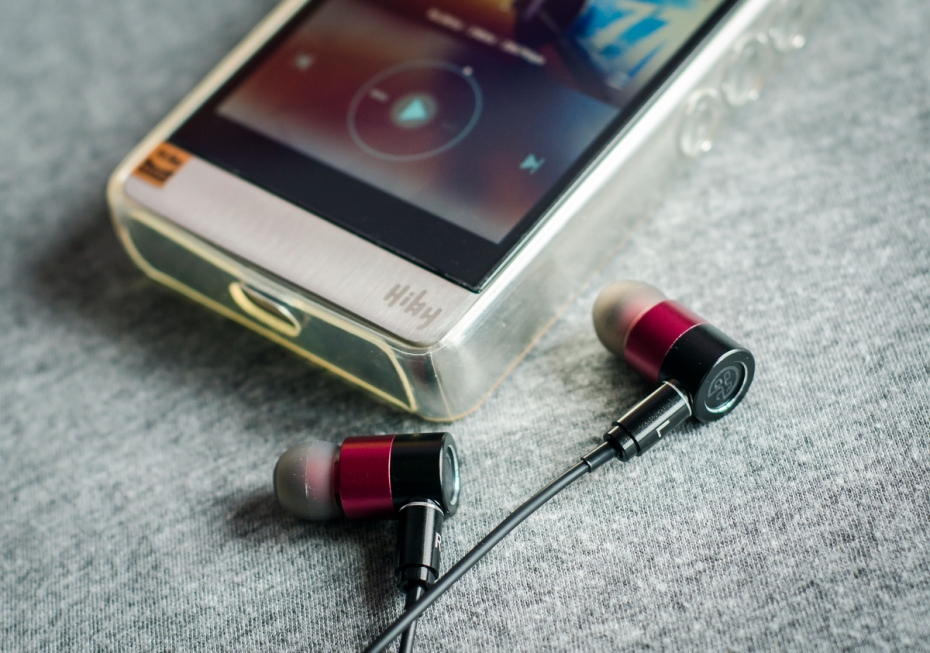
Lows in Wine are quite exposed and showing up in some big amounts. Texturing of bass is moderate but the reach of deep bass is surprisingly good. The amount of bass here forces to say that IEMs are tending to darker sound with warm timbre in overall. Using it with DAPs that emphasize bass even more is not welcomed. It is much better off to go with something very detailed, neutral or even a bit cold like Dethonray DTR1.
Midbass is totally ok, sounds natural and perfectly weighted. There are some minor influence of treble part in upper midbass portion that would sometimes place more accent on track leading rythm but not too much to sound distructing.
Mids and vocals:
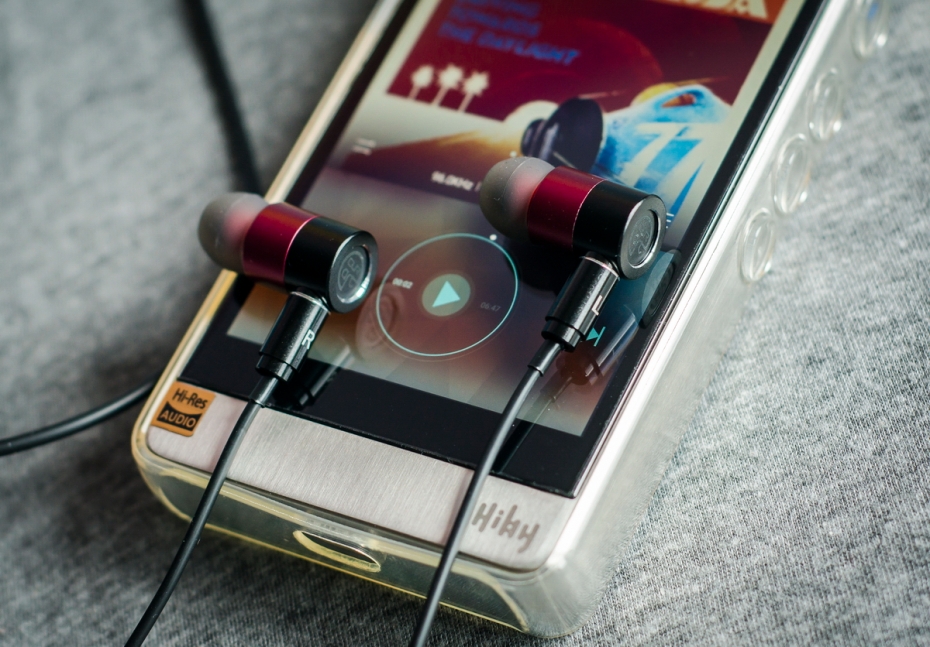
Mids are standing in a line with bass, well-exposed and moderately detailed. Some difference in gain between the upper and lower mids does show up and making male voices a bit laid back and distant while female vocals are having very good expression and brought to front. Same goes to the instruments — strings and bows are more apparent and better resolved. Interesting that female voices don’t get too shouting at higher volume even with such scewness in tuning.
Treble:
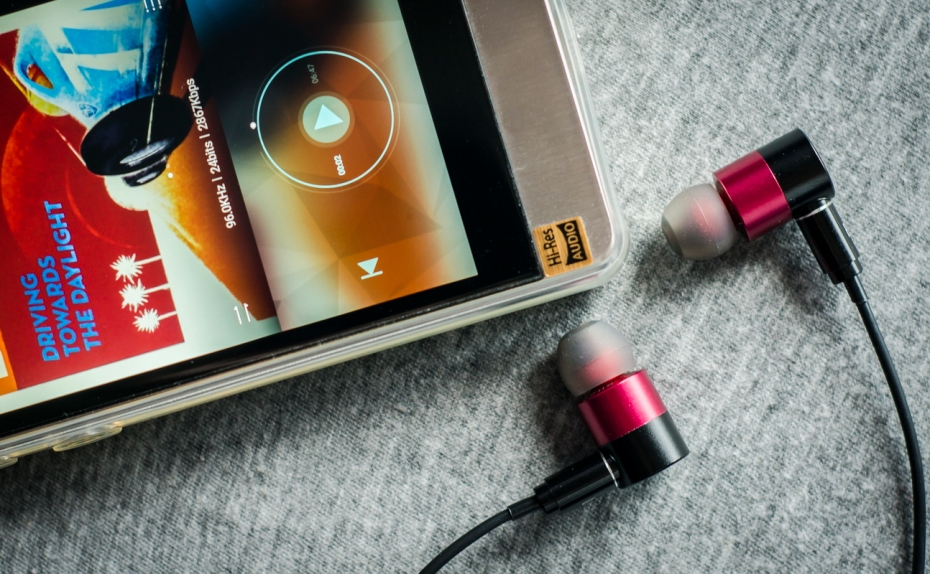
Treble is quite laid back, especially the upper part. Lower treble is more or less balanced to the rest of the ranges. Such presentation is free of any piercing sounds but it also leads to less extended and transparent perception. The part of the treble that is perfectly audible is accurate and detailed while the tiny sounds roll off very fast and get shadowed by bass or mids. This also makes Wine sound warmer and darker.
Soundstage:
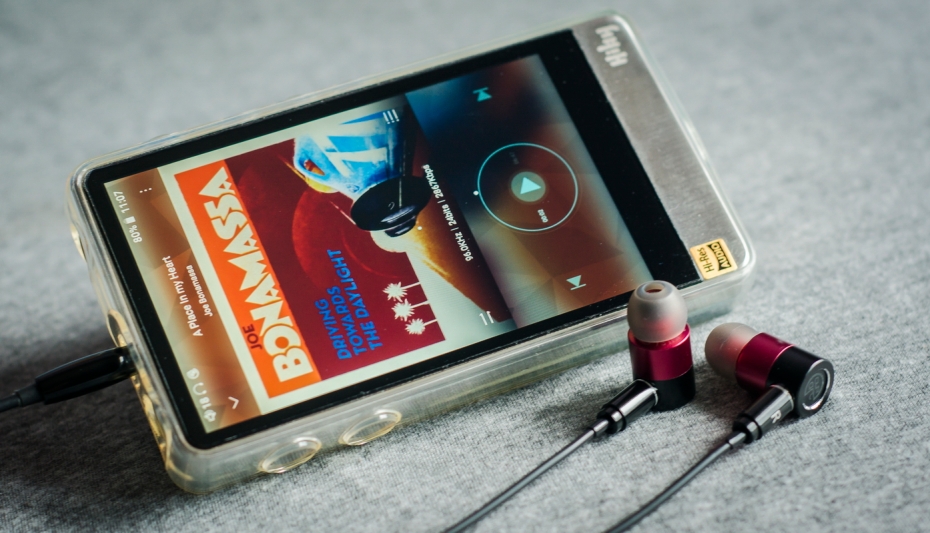
Soundstage perception is a bit contradictory here as the high volume of bass and some scewness in mids create and good feel of width and depth but what is missed out is the clarity and transparency of the sound that might have helped with the precise location of the instruments on stage. Little more gain on upper treble — and everything would be fine. Again, that is why Wine are better off with brighter sources.
Sound in overall:
Ourart Wine sound might be described as dark and warm with big bass presence, good bass depth, engaging midbass, moderately detailed mids with some extra expression on female vocals and laid back treble. Instrument separation and stage are moderate.
Compared to Rose Mini2 MKII:
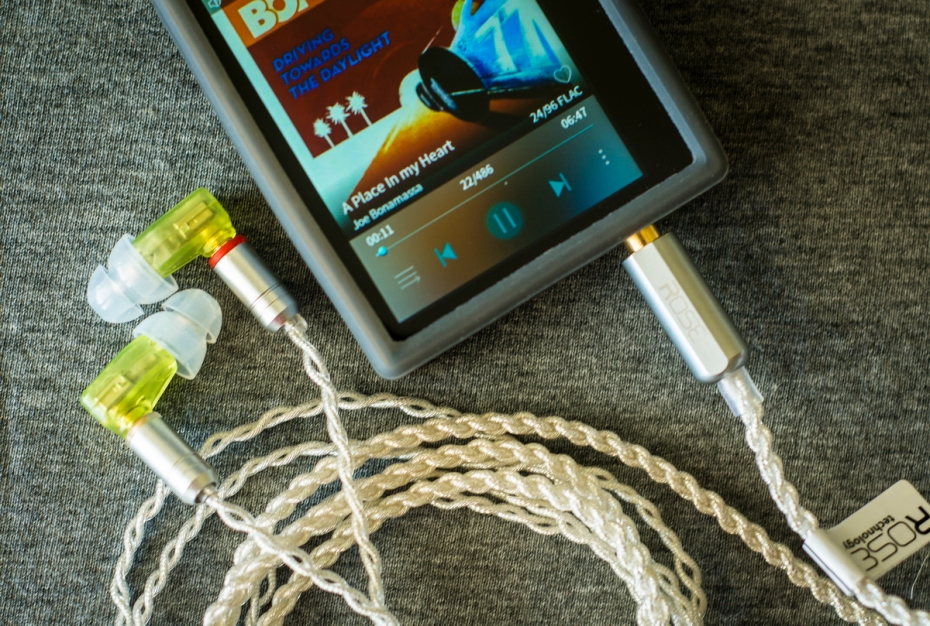
Rose Mini2 MKII have quite different nature due to BA drivers. The resolution is higher in overall, instrument separation is better and the treble is more crisp and exposed. At the same time — less extension and presence of bass, less natural midbass… I would say that Rose is better for music with lots of instrumetns (like orchestra, rock, etc) whereas Wine are better for slow and mellow genres like blues.
Compared to Tanchjim Darkside:
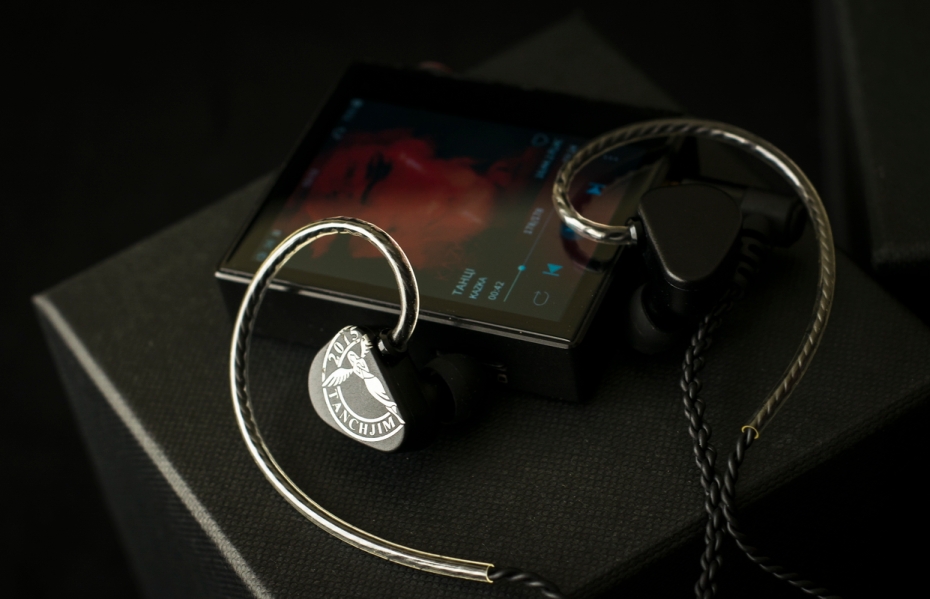
Tanchjim Darkside also belong to dark sounding and bassy IEMs. If I were to choose from the two — Darkside have almost similar sound picture with less scewness in mids and less bass presencet. Wine are more comfortable in terms of fit, have deeper bass, more expression on vocals and less accent on treble.
Compared to TFZ No.3:

Another dynamic IEMs with warm timbre and tending to dark sound. Very comfortable in terms of fit, have better resolution and less scewness on mids. Treble is similarly limited in extension and clarity, plus less deep bass reach and volumetric feel. But in overall Wine and No.3 are very close to each other soundwise.
Conclusion:
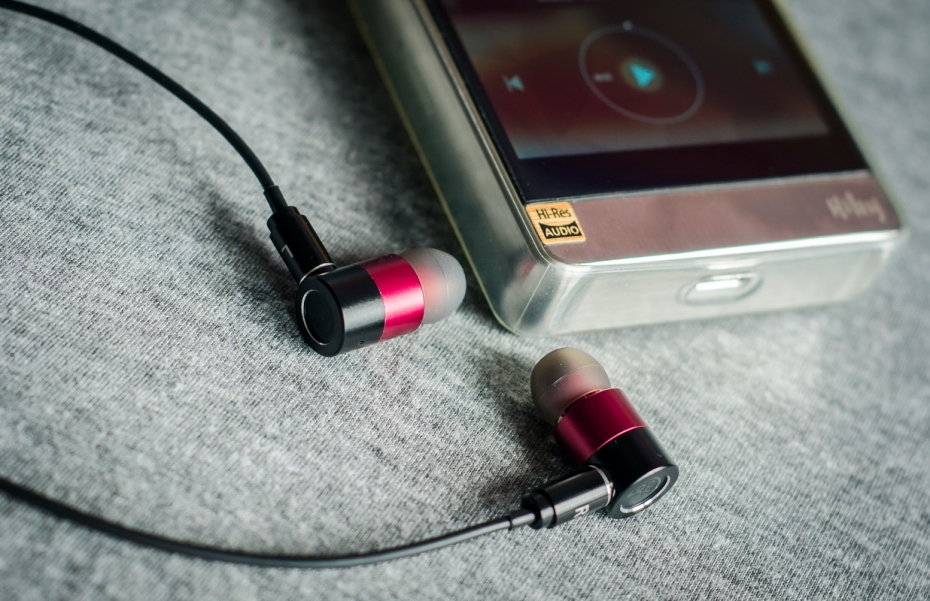
Let’s say that Ourart Wine are interesting pair of IEMs, at least in the correspoding price segment when directly compared to its competitors. Fit, build quality, first impression, packaging design are great. In terms of sound — pros are the deep bass reach, engaging midbass and emotional vocals. Ourart could have worked more on the overall resolution and balance but the other contenders show quite similar results. Therefore, the goal is met and now there is another good option among the respected class rivals, especially for the bassheads or dark sound fans. The only advice is to combine with bright and resolving DAPs instead of warm sources or a mere smartphone.

